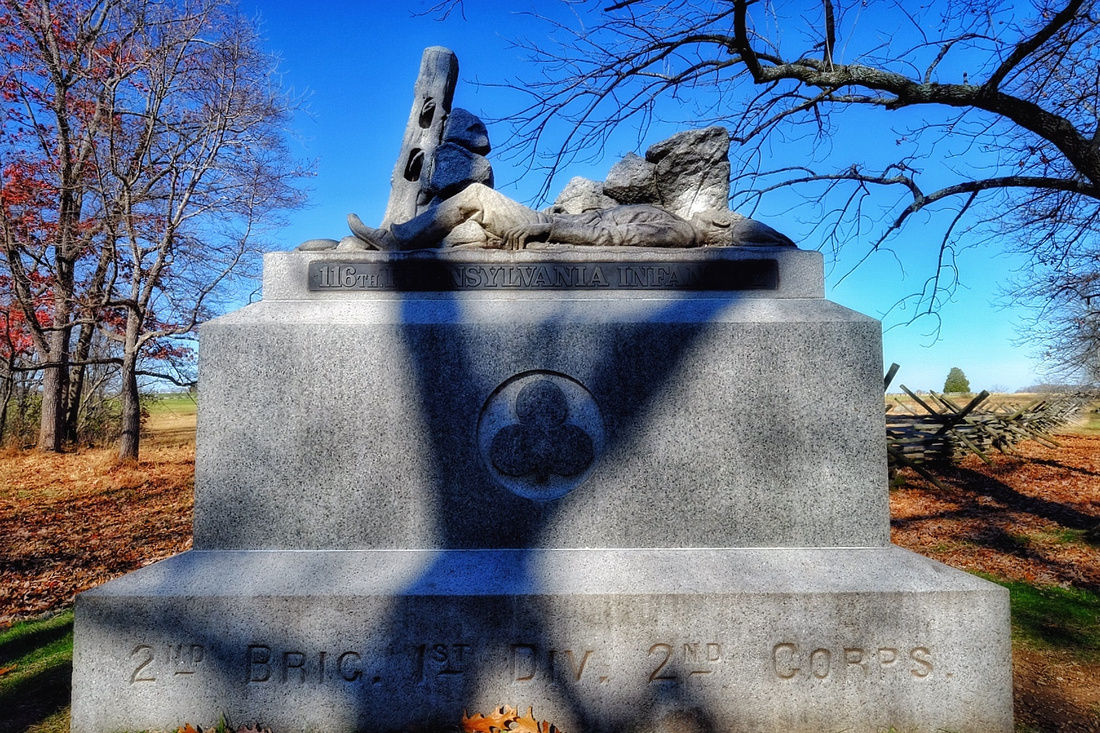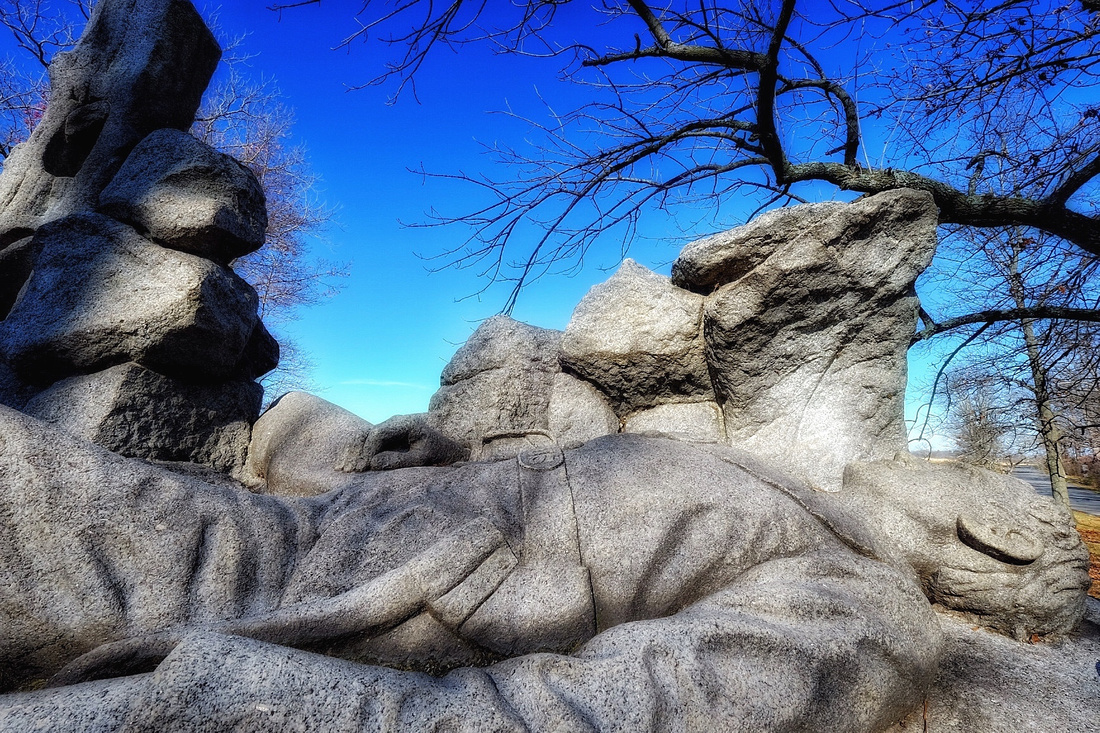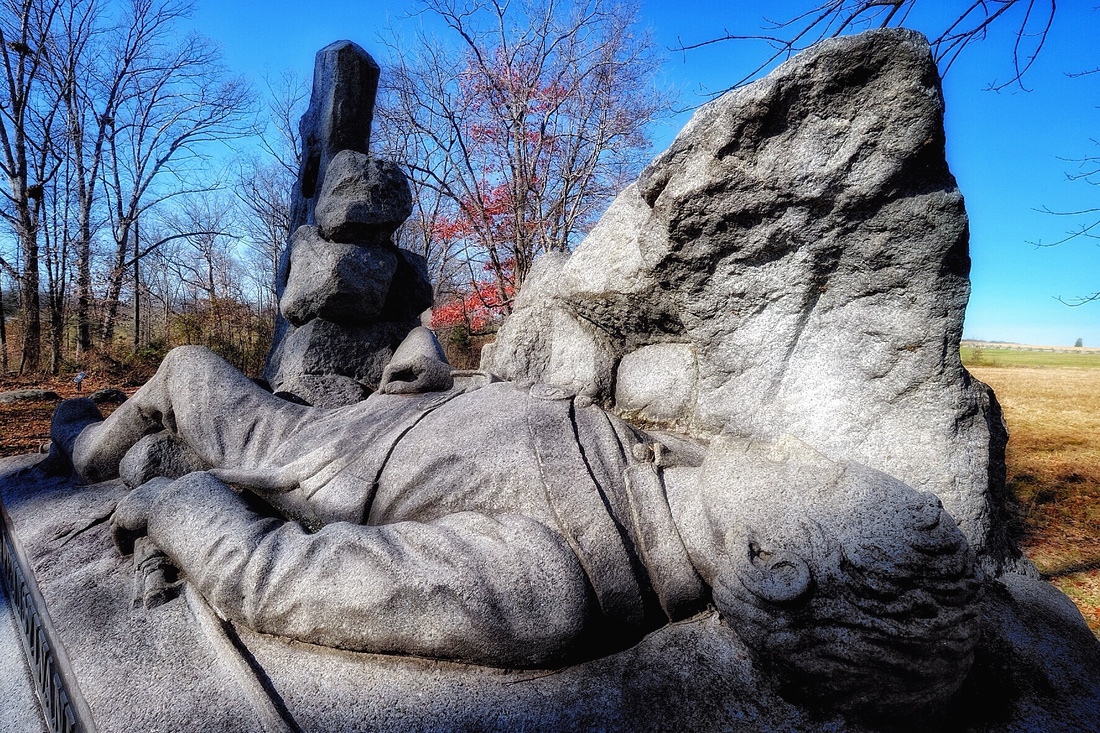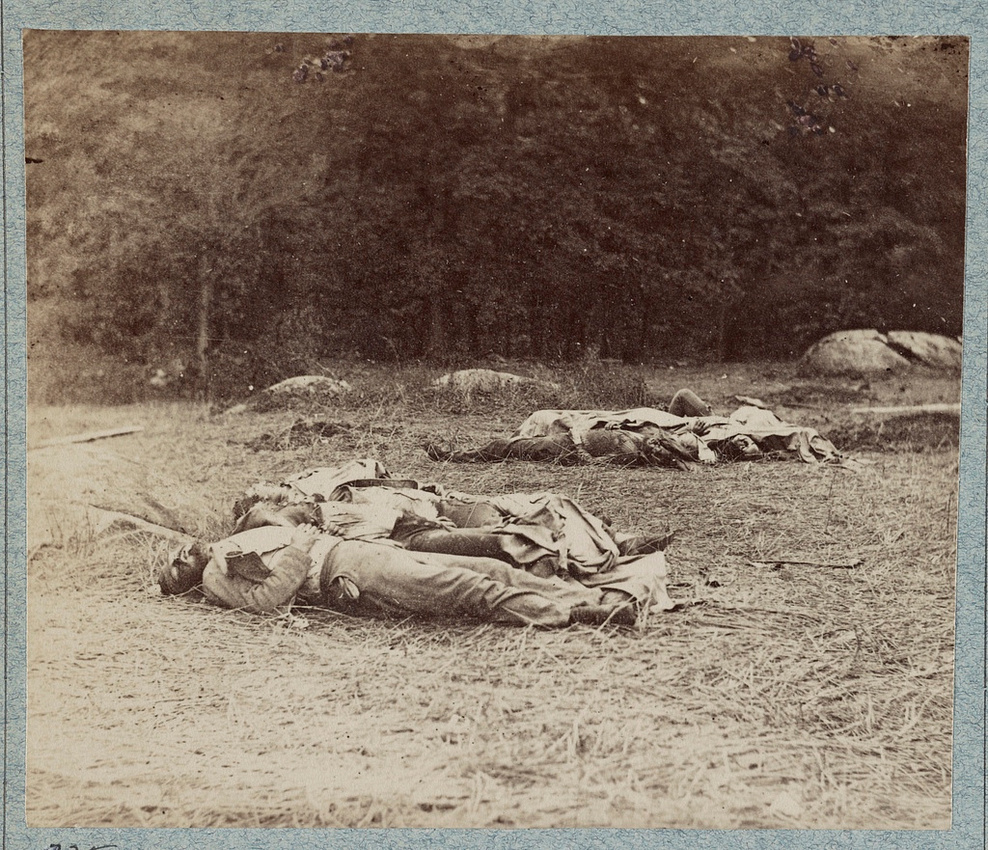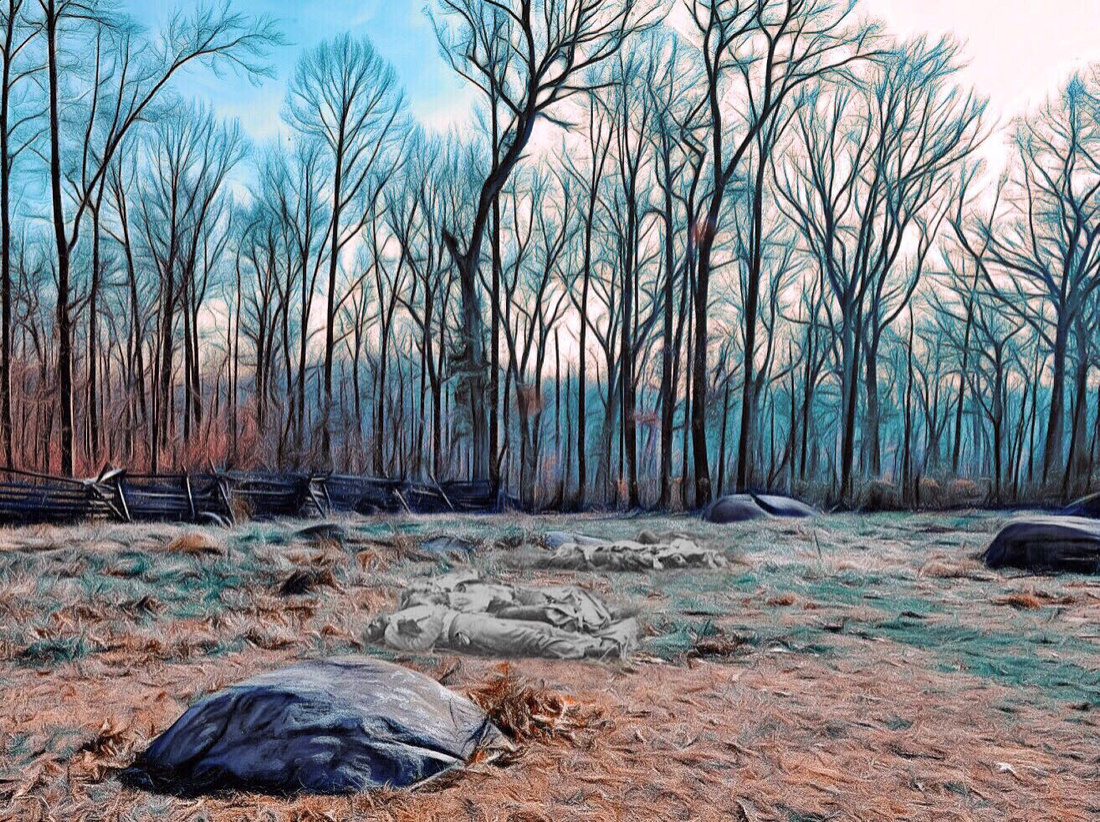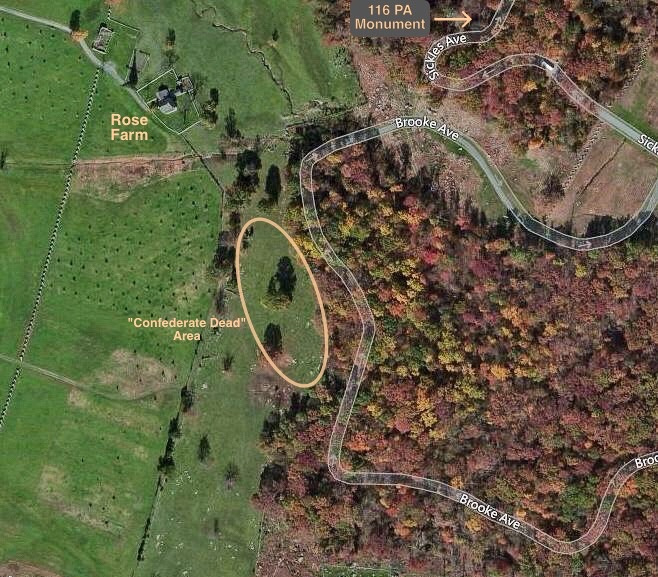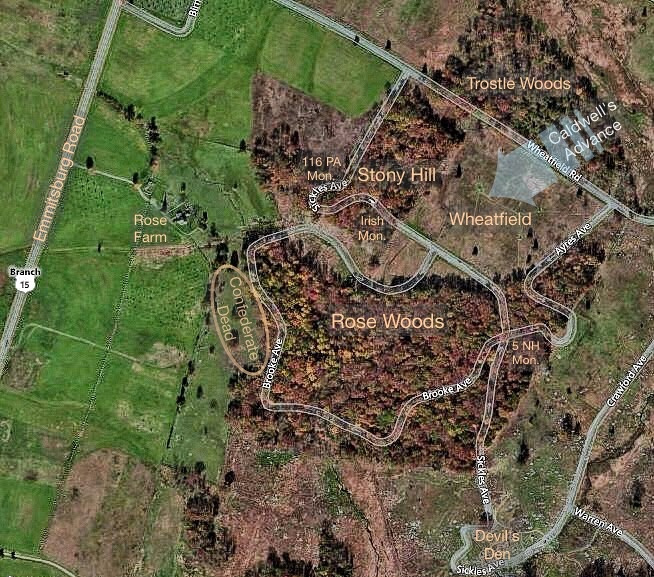The Consecration at Gettysburg
On that crisp March day of 1967, as he looked up from the heavily wooded battleground of which he was traversing, a precocious college student, William Frassanito, could not believe what he saw. After five hard years of dedicated searching, the split rock he longed to locate stood unmistakably before him. This discovery would soon unlock an 104 year-old mystery of the exact location of Confederate corpses photographed by Alexander Gardner on the Gettysburg battlefield [see photo below]. Frassanito's relentless research would lead to a new appreciation on how to view 19th century photography. No longer would we approach these images only as aesthetic fine art but also as documentary historical evidence to help unfold the veracity of image identification by the photographer. For Frassanito's methods revealed not only that the location of the corpse images were misidentified by Gardner, but that he had staged several images by moving some of the bodies 50 yards from their actual site of demise to a more photogenic acceptable background. In addition, rifles were moved and used as props to further enhance the image.
Although inferred, Lincoln's famous address did not directly indicate that only the Union dead consecrated the Gettysburg battleground. I therefore am comfortable to take the liberty to discuss momentarily the memory of the "Confederate Dead" from Semmes' Brigade, as photographed by Gardner. Semmes' Georgia Brigade had counterattacked Union troops from Caldwell's Division in the famous Wheatfield fighting late in the day of July 2nd. Brooke's Brigade of that Division inflicted some heavy casualties to the Georgians just west of the woods on the Rose Farm. Some visitors comment on the Gettysburg National Military Park (GNMP) setting as not inducing a solemn feeling while walking the grounds, due to the pristine, nature park-like atmosphere. I have found that the only way to circumvent this recreational reaction is to utilize Frassanito's 1975 seminal book, "Gettysburg: A Journey In Time", as a conduit to transcend time and space. His "then and now" shots facilitate the visitor's ability to evoke an emotional connection to the carnage that actually took place in the spot in which they stand and ponder that moment over 150 years ago. Using an artistic rendering of a recent photograph of the split rock that I captured near Rose Woods, I have super imposed the 1863 corpse photo taken by Alexander Gardner at the same location a few days after the battle [see image below]. This image is located at a spot seldom visited by tourists. Knowing its significance will elicit eerie inner feelings and awaken your spirituality when you are standing at that isolated spot adjacent to the Rose Woods. You too can locate this secluded area by watching this four minute video, "Exploring the Rose Woods in Gettysburg", or reviewing the two aerial maps that I have constructed below.
You will note that one of the corpses in the Gardner image has his knee bent in rigor mortis. The only Gettysburg battlefield monument that depicts a corpse is the one dedicated to the 116th Pennsylvania, located on the Stony Hill near the Wheatfield. The 116th was part of the Irish Brigade, discussed in length in my blog, "The Devotion At Gettysburg". During a bloody struggle, the Irish Brigade swept three South Carolina regiments off the Stony Hill during a critical phase of the Wheatfield battle. Shortly thereafter, in the same general vicinity, a series of ferocious attacks and counterattacks would take place between the troops of Semmes' and Brooke's Brigades. The corpse in the 116th monument has both his knees bent, just like the one Rebel corpse in the Rose Woods image taken by Alexander Gardner. The design of the monument for the 116th Pennsylvania Infantry Regiment came about from the following incident told by Major St. Clair Mulholland ("Story of the 116th Regiment Pennsylvania Volunteers", pages 126-127) after the Irish had driven the Confederates from the top of the Stony Hill: “... and so, on this occasion the fire of the Regiment was terrible in its effect, while the small rifle balls of the South Carolina men went whistling over the heads of the men of the One Hundred and Sixteenth. In front, and a little to the right, stood the Rose farm house and barn. Over the little valley in the immediate front one could see the enemy massed and preparing for another attack. The dead of the One Hundred and Tenth Pennsylvania Volunteers lay directly in front, on the ground which that command had vacated but a half hour before, and one young boy lay outstretched on a large rock with his musket still grasped in his hand, his pale, calm face upturned to the sunny sky, the warm blood still flowing from a hole in his forehead and running in a red stream over the gray stone. The young hero had just given his life for his country. A sweet, childish face it was, lips parted in a smile - those still lips on which the mother’s kisses had so lately fallen, warm and tender. The writer never looked on a soldier slain without feeling that he gazed upon the relics of a saint; but the little boy lying there with his blood coloring the soil of his own State, and his young heart stilled forever, seemed more like an angel form than any of the others.” The scene witnessed by Mulholland was the inspiration for the prone figure on the monument to the 116th Pennsylvania. It is the only monument on the battlefield that with each and every drive-by pass, I am filled with great solemnity.
It is significant to note that Frassanito's "then and now" photos from Journey also exposed how overgrown the landscape was at the time of his revelations when compared to immediate post battlefield images. The sight lines of the mid-20th century hid many important terrain features critical during the battle and compounded the difficulty of Frassanito's investigative quest. Gardner's photos showed the split rock residing just outside the Rose Woods. When Frassanito made his discovery in 1967, the rock was now part of the extended woods and remained that way well into the early part of the 21st century. These paired century photo comparisons arranged by Frassanito inspired the GNMP to expedite their plans to restore and preserve the park back to forest and vegetation conditions as they existed at the time of the battle. After much work spanning many years, the military park restoration effort was basically completed a few years back and one can now view the Rose Woods as it was on a hot July day in 1863 when the bodies of half a dozen Georgian soldiers laid in rest prior to burial.
Another wonderful read is Frassanito's followup book to Journey: "Early Photography at Gettysburg".
Refer to this 6-part Gettysburg Daily video on "A Journey in Time, The Story Behind the Book". Part 4 is about the important discovery of the split rock.
This concludes my 5-part series on the "Gettysburg Address Preserved" of which I started on November 19, 2015. I intend to publish three more blog posts covering the second day of the three-day Battle of Gettysburg with photos of the associated battlefield monuments (see Notes 1-3 below). Please stay tuned in to my blog posts by subscribing to the RSS feed (see button below). If you enjoyed my series on "Gettysburg Address Preserved", a like or share on Facebook is always appreciated. Thank you.
Note1: Be sure to watch out for my upcoming blog post on The Sound and the Fury at Gettysburg (The Cannoneers at Trostle Farm).
Note2: Be sure to watch out for my upcoming blog post on The Wounded at Gettysburg (The Extraordinary Charles A. Fuller and the 61st NY at the Wheatfield).
Note3: Be sure to watch out for my upcoming blog post on The Sacrifice at Gettysburg (The 4th Michigan Seizes the Colors in the Wheatfield).
For some absorbing anecdotes concerning the Army of the Potomac, see Dr. Timothy Orr's blog: Tales from the Army of the Potomac.
My full Gettysburg gallery of photographs can be found at D.W. Orr Gettysburg Gallery.
D W Orr
Environmentalist, Historic Preservationist, Weimaraner Companion, Blogger, and Photographer
Harford County, Maryland
June 18, 2016
The 116th Pennsylvania Monument - Is that a shadow of a cross projecting across the base of the monument?
The 116th Pennsylvania Monument - "and one young boy lay outstretched on a large rock"
The 116th Pennsylvania Monument - "with his musket still grasped in his hand, his pale, calm face upturned to the sunny sky"
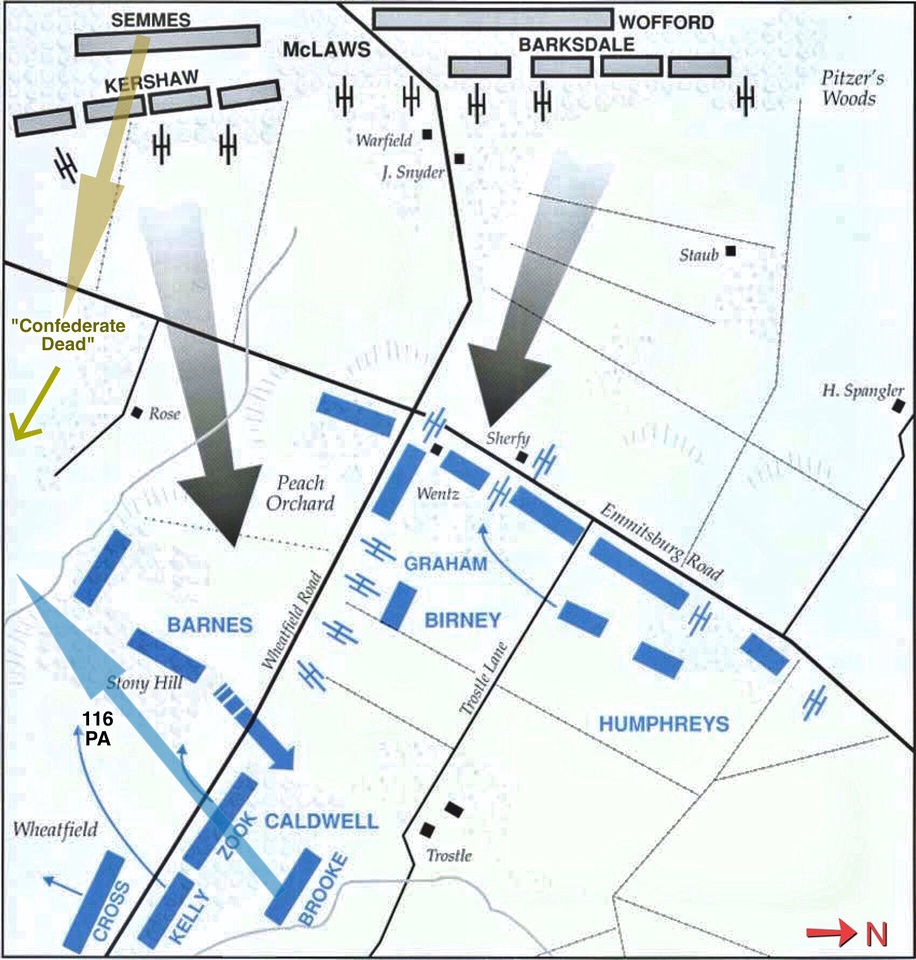
 116th PA in the Wheatfield and Advance to the Stony Hill; Brooke's Brigade Clears the Wheatfield; Semmes Counterattack; Location of Gardner's "Confederate Dead" of Semmes Georgia Brigade (Map courtesy of the NPS)
116th PA in the Wheatfield and Advance to the Stony Hill; Brooke's Brigade Clears the Wheatfield; Semmes Counterattack; Location of Gardner's "Confederate Dead" of Semmes Georgia Brigade (Map courtesy of the NPS)
"Confederate Dead" from Semmes Brigade and Split Rock at Rose Farm (Photo by Alexander Gardner and courtesy of the LOC). Note the bent knee of the last corpse in the back - similar to the 116th PA monument.
"The Ghosts of Semmes' Brigade" (Artistic rendering by D. W. Orr). Using a recent photograph I captured near Rose Woods, I have super imposed a contemporary corpse photo taken at the same location a few days after the battle by Alexander Gardner. This image is located at a spot seldom visited by tourists. Knowing its significance will elicit eerie inner feelings and awaken your spirituality when you are standing there.
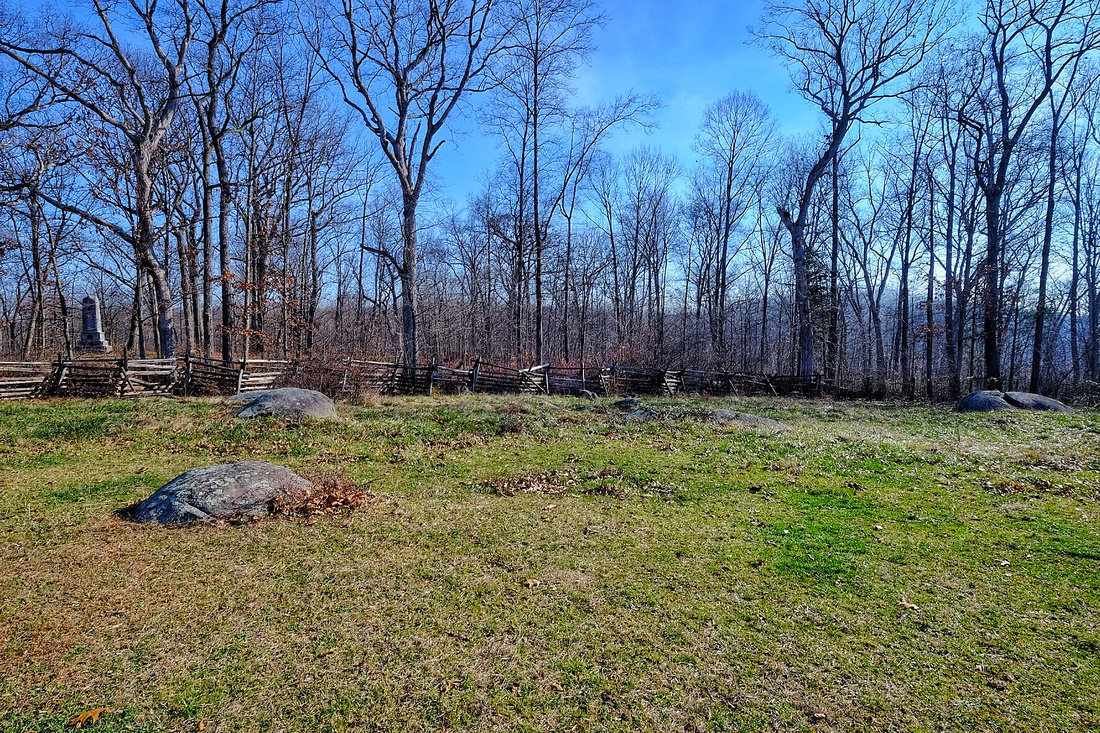
 Wider View Showing 64th NY Infantry Monument in Background; Big Roundtop can be seen in right background behind trees
Wider View Showing 64th NY Infantry Monument in Background; Big Roundtop can be seen in right background behind trees
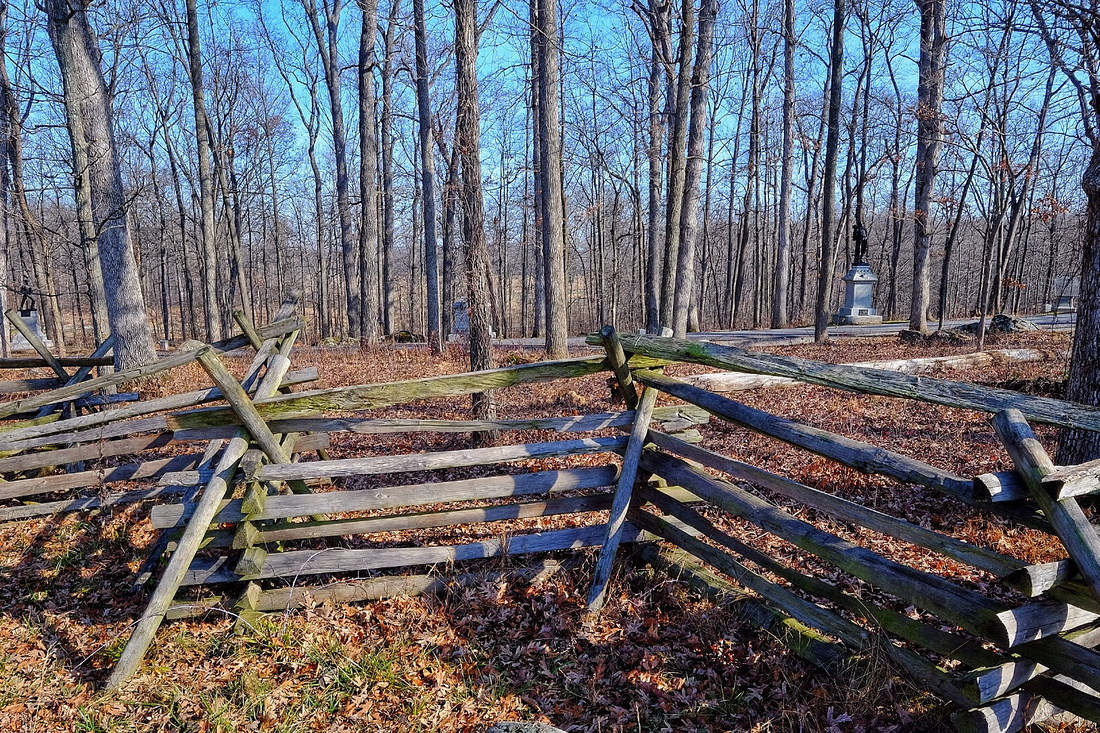
 View from Rose Farm Depicting Brooke's Battle Line on Stony Hill: L-R, 145 PA, 27 Conn (behind tree), 53 PA, 4th Brigade Tablet
View from Rose Farm Depicting Brooke's Battle Line on Stony Hill: L-R, 145 PA, 27 Conn (behind tree), 53 PA, 4th Brigade Tablet
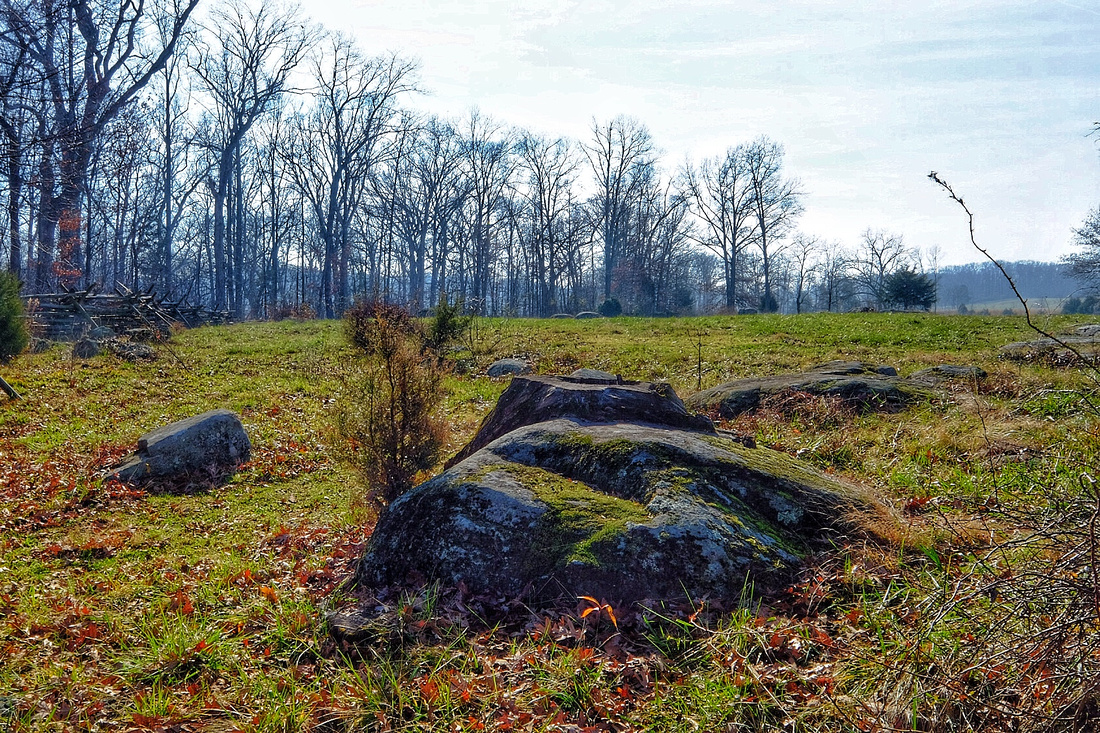
 Confederate Dead Area - Rose Farm Looking South
Confederate Dead Area - Rose Farm Looking South

 Confederate Dead Area - Rose Farm Looking North
Confederate Dead Area - Rose Farm Looking North
Location of "Confederate Dead"
Aerial Landscape of Day Two
